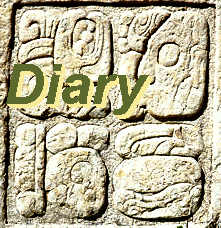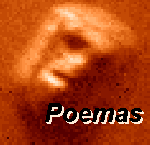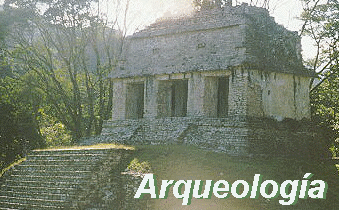



Andar Tras Mesoamérica : Towns & People |
Latest Diary : Calendar |
Latest Poem : Index |
Archeology |
Tijuana, Baja California
He'll fly his astral plane
take you trips around the bay
bring you back the same day....
Most tourists come from California to spend the day here, buy Mexican curios, eat a Mexican meal, or drink and dance the night away. Many people from other countries are already visiting California, and take a short trip "south of the border" from Los Angeles or San Diego.
But Tijuana can be more than a day trip. It is a gateway into Mexico from the west coast, it is the doorway into the spendid natural wonders of Baja California, and it is a social phenomenon all its own.
The climate is generally benign, like most of the Californias. The mountains beyond the coast can be cold in winter. The deserts behind the mountains can be fearfully hot in summer. But the coast is usually mild -- almost every day is perfect driving weather.
Tijuana is a world-famous name -- it has a "dark legend" -- la leyenda negra -- of drugs, prostitution, gambling and drinking.
But ever since tourism began in Tijuana, there has been an even more important, and underlying reason why people come to this border city of the twin Californias.
Visitors come hoping to "see Mexico," or, in other words, to experience Mexican culture, whether that experience be in cantina, bar, bullring, restaurant, store, music hall, nightclub, or just walking on the street.
Yet, for many years, cynics on both sides of the border have complained that Tijuana is not very Mexican at all, that it is more like L.A. than Mexico City, that it's a border half-breed, a mixed child cut off from its roots, with only a "cholo" culture.
However, even though Tijuana is far from the national capital (fathest city in all of the Republic, actually), nevertheless this municipio is definitely very Mexican in language, culture, world-view and personality. The historical roots mostly go back to Sonora, Sinaloa, and Guadalajara, from "fundadores" (founding families) in the late 19th and early 20th centuries. Since 1960, waves of immigration have filled the frontier with citizens from all over the country. This town of a few thousand exploded into a metropolis of some two million. The vast majority of its citizens are now first and second generation immigrants from all parts of the republic. Jalisco, Sinaloa, Veracruz, Guanajuato, Puebla, Oaxaca, Chiapas and every other state of the nation have given their children to the frontier, with representatives from every region enriching and enlivening Tijuana, transforming it from distant border outpost, into something almost more Mexican than Mexico City itself. Strange postmodern irony: that the frontier should become as representative as the center. But, as the municipal motto says, this is "where la patria begins."
As for looking like L.A., well, we should remember there are more Mexicans in Los Angeles than anywhere else in the world except Mexico City. The difference is that here, in Tijuana, you really are in Mexico, where Spanish is the dominant language, and English is foreign. A large indigenous population has also migrated here, representing most of the Indian groups in Mexico. Mixtec and Zapotec from Oaxaca, Huichol from the Sierra Madre, Nahuat and Otomi from the Altiplano, have all come here with others. You can hear their languages mixing with Spanish throughout the city.
Of course, to see the "real" Mexico in Tijuana, the visitor must make the effort to get off of Revolution Avenue. This street - the primary tourist destination - has its peculiar charms (and it should be seen). It is, furthermore, the biggest "paseo" in town. People -- both locals and tourists -- like to walk up and down the street looking at each other. This means that in a disneylandia kind of way, it is also a Mexican place -- the paseo, or promenade, is a very Mexican custom. But like the burros painted to resemble zebras, "la Revo" is a strange beast indeed. To see more of a truly Mexican culture, not a touristic hybrid, you must also walk to another street.
Fortunately for the day and overnight visitor, within two blocks you can experience the heart of Tijuana. Parallel streets immediately west from Revolución - streets named Constitución and Niños Heroes - are each packed with ten blocks of stores and shoppers. They provide an excellent opportunity for the tourist to savor a taste of "real" Mexican culture.
The market area around 2nd (Juarez) & Niños - the Cathedral corner - is particularly satisfying, and close-by, within two or three blocks of the big metal arch. Daylight hours - when most shops are open - are recommended. Night is a little weird. But go ahead, buy something this afternoon. "El Popo" Market -- which has two entrances -- one on 2nd, one on Niños -- tunnels into the block diagonally across from the cathedral corner -- its mouths open several doors to the left or right of the taco shop. An old movie house sits far back inside, behind the market stalls which shows tons of old Mexican shoot-em-up movies and occasional Hollywood and European films. Cheap admission (under three dollars in 2001), this old movie house was the site of one of INSITE 2000 art/event/works. The cinema house is locally known as "El Piojito" -- the louse-pit. *Grin* but I have seen -- Nor Felt -- No Lice there.
In the diagonal block down Niños (past the cathedral and the school) is the entrance to yet another large roofed-over market ("El Mercado Municipal") which has lots and lots of economical puestos de comida -- places to eat -- with dozens of women asking you to sit down and eat at their place, here, now... (but Be AWARE that anything they offer you, you will pay for). There is a large flower market deep within.
If you keep on walking down Niños you get to First Street, where the sex workers begin to hang out all over the sidewalks and corners. One block further is Coahuilla Street, the red-light heart of the Zona de Tolerancia -- the Zona Norte. Be-ware.
Travelers with an interest in more "highbrow" Art, History, and Culture (with a capital A, H, & C), should consider a visit to CECUT (Centro Cultural de Tijuana) in the river zone (across the street from the shopping mall with its movie theaters). Experience the Museo de las Californias (a museum of Baja California history), or the art galleries, bookstore, theater stage, lectures, video screening, OMNIMAX dome and garden-window cafe (most of the CECUT is closed Mondays -- traditional museum-closed day in Mexico). Incidentally, the CECUT bathrooms are excellent, free, and well-maintained. If you feel like walking there from Revolution (half-mile or more), go downhill on 5th, 6th or 7th and make your way through the produce and meat market neighborhoods toward the "zona rio." CECUT is at the big brown ball beside the world's largest pair of scissors. About a mile from downtown. Be careful crossing the streets.
Did I mention the Plaza Rio shopping mall next door? Then, go across the river, to the gardens outside the new city hall (Palacio), where the ICBC (Cultural Institute of Baja California) sponsors art exhibits and weekly film screenings. Next door to the library. City Hall plaza is of course the site of many official festivals and concerts, including September 15th "Grito de libertad" climaxing at 10:00 p.m.
Back downtown, only a block from Revolución, at 2nd and Constitución, in the ex-city palacio (now the offices of IMAC -- Instituto Municipal de Arte y Cultura) you will find the Gallery de la Ciudad (municipal gallery) which hosts regular exhibits of local, regional, and national artists (daytime hours, except for occasional evening inaugurations, closed for political remodeling [2002]).
The Casa de la Cultura, also run by the IMAC, holds galleries, café, classroom spaces, and theater, in the big old beautiful ex-school building on the hill of Altamira above the west end of downtown. There is also a branch of la Casa de la Cultura in Playas de Tijuana, at the Cortijo San Jose.
Nina Moreno, a fairly well-known artist and patron of Mexican, Latin American, and Baja California artists, has recently (2001) closed her gallery on Third Street across from the park. She continues to work on her own art, produce her radio program, and provide space for master-teachers to give classes. She hopes to open an internet gallery some time soon, for on-line browsing, viewing, and buying.
A daytime visit to Teniente Guerrero Park (six blocks west of Revolución between 3rd and 4th and "F" and "G") will provide the visitor with a view of this pueblo's living heart: the popular culture of family, friends, couples and singles who come to the park to picnic, play, and chase after love. Good sets of playground swings for the children. Weekend music and entertainment. At night it has a dangerous reputation.
Numerous cafes and small spaces abound throughout the city. Check for advertisements in Bitacora a weekly arts paper (in Spanish) available every Thursday night or Fridays at CECUT and EL DIA bookstores.
El Lugar del Nopal, the living legacy of the late Felipe Almada, at the head of Cinco de Mayo (F Avenue) above 6th, three blocks from Teniente Park, is an Art Cafe with gardens, open Afternoons and Evenings (NOT MONDAYS) for: Drinks, snacks, art, music, meetings, etc., on a varied schedule. Almost always music on Thursdays (El Gume's guitar and voice) and weekends (cover charge usually on Friday & Saturday nights. Always quality performers. Gets crowded after 9:00 p.m. on Thursday, very much a "scene to see and be seen".
Also Juglar Cafe on 8th near Sanchez Taboada, just off the street in a pink/beige two-story building with a mirrored gym in front. Good bar and food, art exhibits, music, discussion groups, etc.
There are just TOO MANY PLACES to eat and drink for me to name even a fraction.
Tijuanenses love to go out. Enjoy their city with them.
Towns & People | Culture & Nature | Countryside & Metropolis | Ancient, Modern & Colonial Places | Valley and Mountain |
Andar tras Mesoamérica : |
Latest Diary : Calendar |
Latest Poem : Index |
Archeology |

|

|

|

|